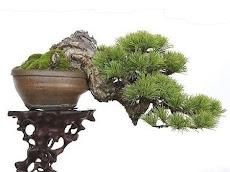By: Patrick Carpen
Spider mites include the web-forming tetranychus and the glasshouse reds. The greenhouse mites and the red spiders often feast at the underside of bonsai or other plants, especially at the leaves. The spider mites and greenhouse will chew at the foliage as well. If the spiders or mites gnaw at the leaves, you will notice marks, patterns, or irregular patterns, which turn yellow, or silver-gray. It depends on how severe the pests have attacked the bonsai. The tree may fade away if you do not treat immediately. The web-formers create webs, which you will find on the trees. To eliminate the problem and save your bonsai spray the plant/foliage with insecticides. You need to spray the undersides. Use acaricides immediately if you notice mild symptoms. You can use defensive action at the start of spring, otherwise use a selection of acaricides so that the pests do not adapt to the chemicals.
Red mites or the red spiders will feast on needles. This will cause the needles to show signs of damage. The plant will change from its natural color, changing to reddish-brown, yellow, etc. The needles will finally fall off the plant if you do not treat. The spiders will produce a matted web between the branches. This will cause the carbohydrates to slow production, since light and chlorophyll is reduced, i.e. the process of plants ability to produce basic carbohydrates produced from carbon dioxide, hydrogen, etc are reduced. The plant will not have the energy produced from photosynthesis processes to continue its growth and produce macrobiotic cellular pigments that absorb from radiant sources.
To treat your bonsai you will need to consider the plants. If you produce conifer and deciduous trees you can wait until the climate is warm and dry the plant. Continue treatment by cutting and destroying any branches that have been severed. Once the bonsai starts its new growth (usually near the end of winter), you can spray the bonsai with tar oil. Tar oil is a thick black substance, which is obtained from destructive distillation process and extracted from macrobiotic fluids. (E.g. coal or wood) Spray the tar oil with caution. Tar oil will destroy the female reproductive cells, or eggs. As the spring nears, use methodical acaricides and spray the bonsai. You will need to spray the bonsai again in the summer with distinctive acaricides. You should water your bonsai munificently in the summer and vapor the foliage methodically.
The deciduous trees will show signs of damage, such as hibernated eggs, which are often found on the branches. At the bark, you may notice red patches. During spring, the mites may leave holes in the leaves. You will find the mites predominantly at the underneath of the leaves. Mites and spiders often drop eggs on confers in cracks, especially at the bark. The eggs are also deposited at the foundation of the plant needles. Geometer moths leave trails on foliage. The pests will feast on foliage and leave perforations in the sprouts, or buds. Geometers will also leave silky web trails in the soil or at the foliage. To treat the problem sprays the bonsai at the last months of winter with oil-based solutions. The oils will obliterate the eggs. Once spring arrives, treat the plant with parathion-based solutions made by chemical processes, or use lindane
Article Directory: http://www.articlecube.com
Patrick Carpen is the designer, writer and owner of the website http://bonsai.infobay.ws/
Infobay.ws is a content based, consumer oriented website that provides high quality content on selected subjects. This website was created to help bonsai enthusiasts in their quest of growing bonsai plants.




No comments:
Post a Comment